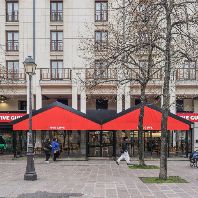Despite a number of prominent retailer administrations in 2008 and 2009, the number of shop branches run by multiples in the UK continues to grow, according to property consultants CB Richard Ellis (CBRE).
A major new study of expansion activity by multiples in the UK reveals that the number of convenience stores, clothing outlets and catering units in national chain networks increased respectively by 2%, 3% and just under 9% over the 2007 and 2010 period. The growth in branch numbers seen in some retail and catering sectors has however been more than offset by branch losses in service shop-uses; motor-related networks; certain small-unit food, CTN and off-licence traders and bulky goods outlets.
Branch expansion in large format stores is accelerating the migration of retail multiples to high volume trading locations, exacerbating stock obsolescence problems in secondary shop property that is no longer viable for multiple retailers' purposes.
Mark Disney, Head of Shopping Centre Development & Leasing at CBRE comments: "The findings show underlying trends evident in the shopping centre leasing market. There is increasing polarisation in the sector with larger centres growing their market share and many retailers focusing on larger format stores.
Premium shopping centres have become increasingly dominated by fashion retailers while the number of operators in many sectors of the non fashion market has contracted. Reduced supply of new space through new development is already impacting on retailers' expansion strategies with an increased focus on opportunities in established centres leading to increased demand in those locations. Void levels in prime shopping centres have fallen sharply over the last 12 months as a result.
"Bearing in mind that 2,000+ new retail units were delivered by developers in 2008 and 2009, the slowdown in branch growth overall explains sluggish rental performance over the last couple of years. With development activity at a low ebb and shop demand heavily skewed in favour of prime/good secondary property in dominant trading locations, occupational cost pressures for the better stock look set to grow."
Source: CB Richard Ellis (CBRE)















